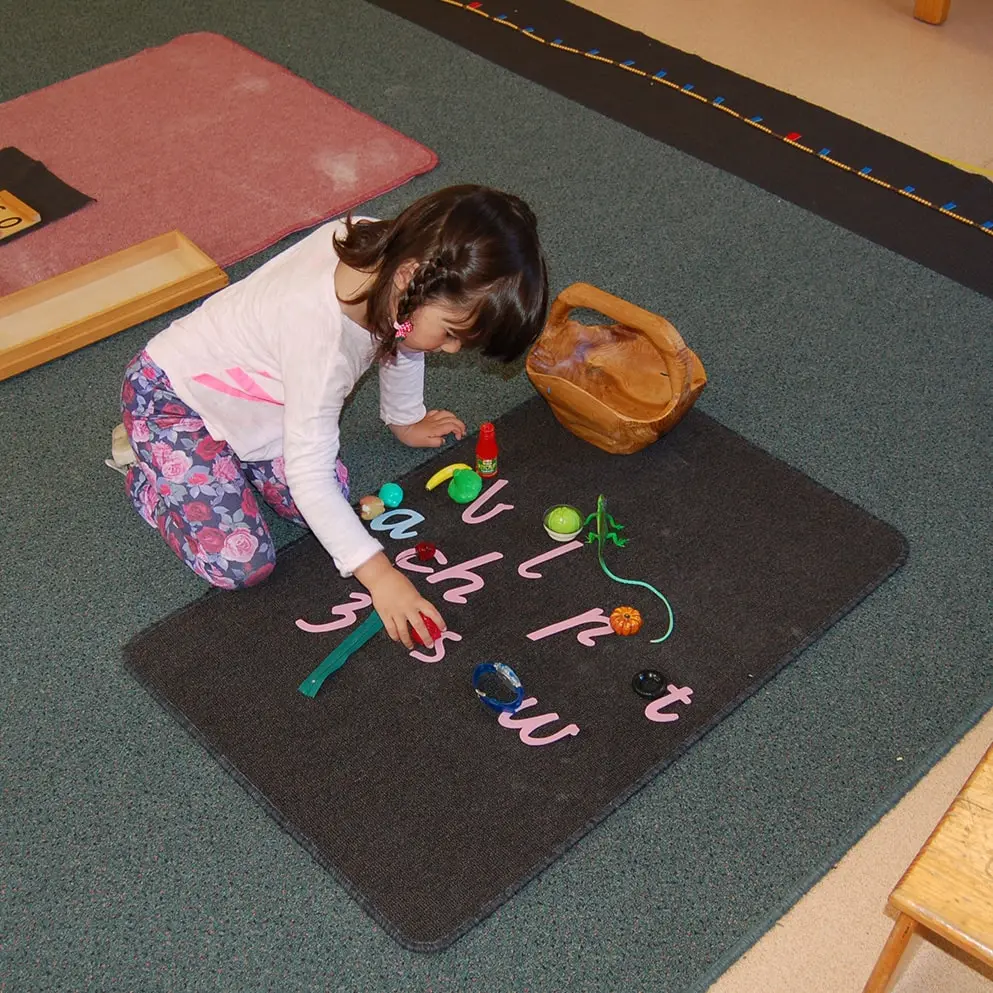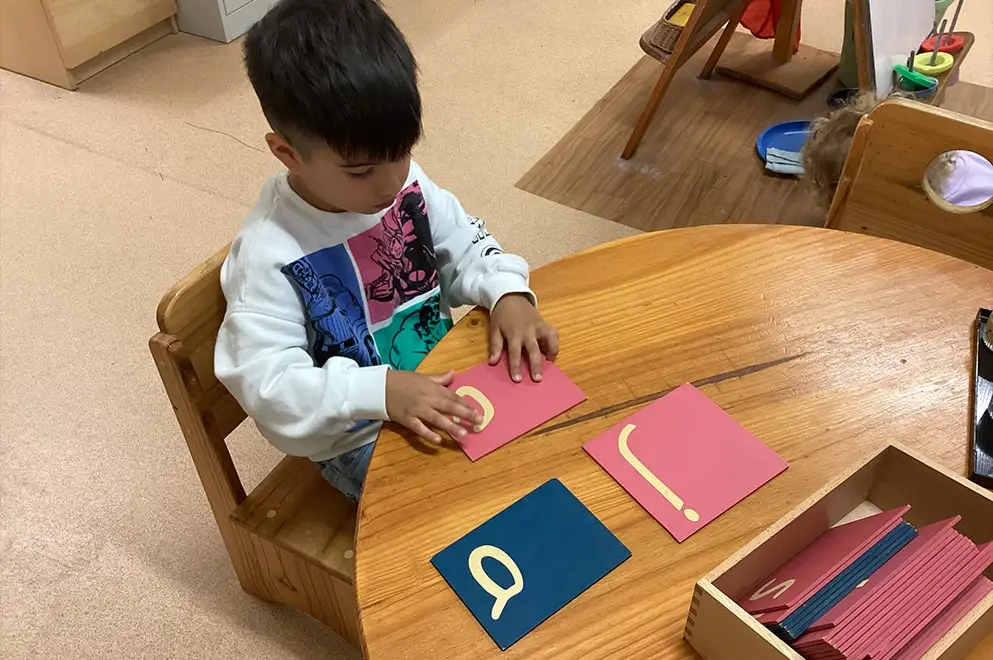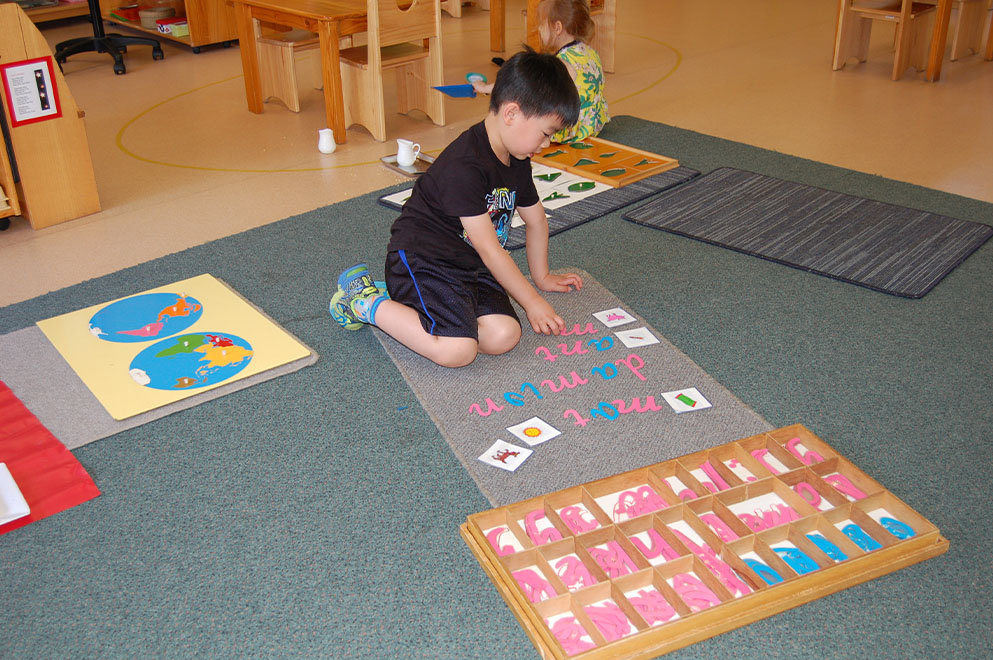
Developing language skills
Children as effective and confident communicators
Children as
effective and confident communicators
Spoken language:
From birth, the child is absorbing the language used around them. In the Montessori program the child is surrounded by rich oral language which expands their vocabulary and promotes their auditory memory and recall skills. Activities used include:
- Language cards
- Adults role modelling use of language
- Books
- Songs
- Conversations
Reading:
Children are given the tools for their reading to develop, with each child progressing to this stage at their own pace. When the child is familiar with writing with the Moveable Alphabet, they will be introduced to reading with the ‘Phonetic Object Box’. Many other activities follow which introduce additional aspects of reading, including ‘Phonograms’ and ‘Puzzle Words’ leading to reading phrases and sentences.
Phonics:
Phonics are used to help the child learn the relationship between the sounds of spoken language and the letters that represent them in written language. It is the basis of a child learning to read and write. Materials used include:
- Sound games
- Sand paper letters
Writing:
Once a child develops their phonic awareness, they are able to put the sounds together to form words. This is initially done using the ‘Moveable Alphabet’. Preparation to develop a child’s physical writing ability so they can eventually write on paper, begins from when they enter the Montessori environment. Materials used include:
- Moveable Alphabet allows the child to ‘write’ words
- Knobbed materials help develop pencil grip
- Chalk boards help refine the child’s writing
- Metal insets help develop control and refinement of the hand




